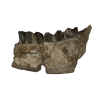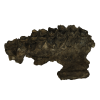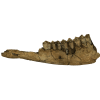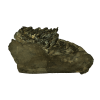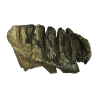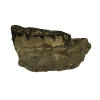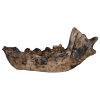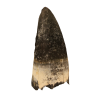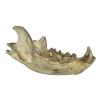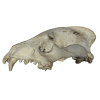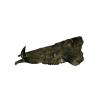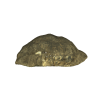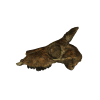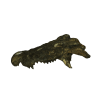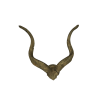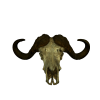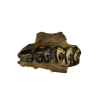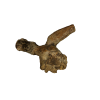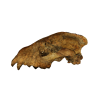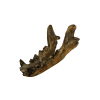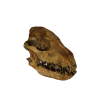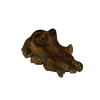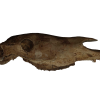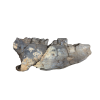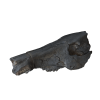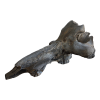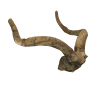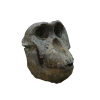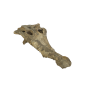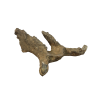The large extinct colobines of the East African Pliocene show remarkable diversity and are relatively common in the fossil record. They are distinctive because in contrast to the modern extant colobines of Africa, they were mostly terrestrial or semi terrestrial.
The “large-bodied colobines” from the Koobi Fora Formation includes three Genera, Rhinocolobus, Cercopithecoides and Paracolobus.
This skull of Cercopithecoides kimeui is relatively complete and has the dentition in place which are the upper left I2, M2 and has an erupting M3 and on the right side, the right Canine to M3. The morphology of the skull and the wear on the dentition of Cercopithecoides kimeui suggests that it lived on a diet of soft yet highly abbrasive foods.
The species shows sexual dimorphism where the females of this species display a shorter and more rounded back of the skull.
This specimen was found by Solomon Aila, in Area 131 from the Upper Burgi Member.






